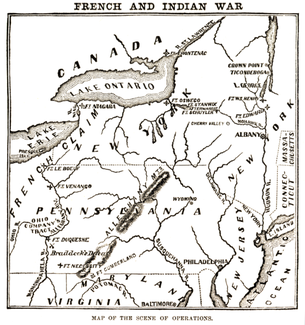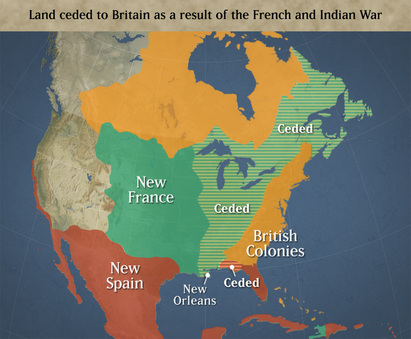Western PA during the French and Indian War
By Andy Hagerty
Looking about the Green covered mountains and the cows blissfully grazing away in the valleys below, it is hard to imagine that at one time Central and Western Pa were the front lines in a world war. Not WW1 or WW2 but what started as the French and Indian war locally, turned into the Seven years war in Europe, the Caribbean, the Coast of West Africa, India and numerous places around the globe wherever the French and English happened to meet. Over in Europe, the major powers of England, Prussia, Portugal and other allies fought France, Austria-Hungary, Russia, Sweden and their other allies.
We are not concerned as much with the marching of great armies through Europe as much as what happened in our own Back yard. An Early victory by a young and unknown Major George Washington was countered by the taking of FT Necessity, a hastily build fort in far West PA. General Braddok to an expedition west and to support his troops, he cut a road. this was the first road really headed westward and would become in time the National Road. His defeat and death put a pall and sent panic throughout Pennsylvania. Due to the leadership of the Quakers, the state had good relations with the tribes and had neither forts or standing militia to protect the populous. The raids and attacks increased in tempo and ferocity from the Shawanese and Delawares, the government in Philadelphia proposed a string of forts from the Delaware river gap to the Maryland State line. We will be looking at some of these forts in the links below.
We are not concerned as much with the marching of great armies through Europe as much as what happened in our own Back yard. An Early victory by a young and unknown Major George Washington was countered by the taking of FT Necessity, a hastily build fort in far West PA. General Braddok to an expedition west and to support his troops, he cut a road. this was the first road really headed westward and would become in time the National Road. His defeat and death put a pall and sent panic throughout Pennsylvania. Due to the leadership of the Quakers, the state had good relations with the tribes and had neither forts or standing militia to protect the populous. The raids and attacks increased in tempo and ferocity from the Shawanese and Delawares, the government in Philadelphia proposed a string of forts from the Delaware river gap to the Maryland State line. We will be looking at some of these forts in the links below.
|
The hostilities raged from 1754 up through 1763. Most of the fighting wrapped up in our area by 1760. this was aided by the Treaty of Easton in October of 1758 in which 13 tribes made peace with the British and enabled expeditions to go and defeat the French forces in North America. and hold the upper hand at the negotiating table for the final peace treaty. When they were given the choice between some islands in the Caribbean and New France in Canada and the Ohio Valley, they chose to cede all of New France in North America. New Orleans and the Louisiana territory would pass to Spain for a time. Side note - To break up the french in the Arcadia part of Canada, they forcibly relocated the population to other area of North America. Some who did not want to be resettled, left and went to New Orleans, their identity would slowly change from Arcadian into Cajuns.
|
|
By the end of this conflict, England would remove French influence from North America leaving no ally for the tribes of Indians. Both England and France doubled their national debt, leading to the eventual overthrow of the French Crown with the French Revolution and the British Parliament imposing new taxes upon their North American Colonies to try to restore their depleted treasury. Part of the treaty of Easton agreed to halt all westward expansion into the Indian lands west of the Alleghenies, the English forbade such in the Proclamation of 1863, which lead to much discontent in the American colonies. These new taxes imposed without representation and the discontent of the colonists not being able to head west would become the catalyst for another war starting in 1776. That however is a different story. |


